Fix Unable to Open XLSX Files Issue Now

Let's say you go to open an important file and get an error message instead. It is normal for this kind of problem to happen for a number of reasons. There are five good ways to fix the problem of "XLSX files not opening" in this article. You can get things back on track fast.
In this article
Part 1: Common Reasons for XLSX Files Not Opening Problem
An XLSX file that won't open can get in the way of your work and make you stressed out for no reason. It might be easier to solve this problem if you know why xlsx file is not opening. why can't i open xlsx files? Here are the reasons of the issue:
- Outdated Excel Version: If you’re using an old version of Excel, it may not support the latest features and styles used in XLSX files. This can happen because Excel is constantly updated to include changes and support for newer technologies, which older versions lack.
- File Corruption: Files can become corrupted for various reasons, such as sudden power breakdowns, unexpected system shutdowns, or errors during file transfers. Corrupted files often lose their structure, making it hard for Excel to read or open them.
- Incorrect File Extension: When a file has the wrong name, Excel may fail to recognize it as an XLSX file. You can't open XLSX file when files are renamed incorrectly, shared via email, or downloaded from unreliable sources.
- Permission Issues: Files that are shared within a network, downloaded from cloud storage, or received from someone else might have restricted rights. These limits can prevent you from opening or editing the file, especially if the file is set to “read-only” or has ownership controls in place.
- Blocked by Security Software: Antivirus programs or firewalls can stop files they suspect to be unsafe. Even legal XLSX files can be flagged if they come from unknown sources or if the security software misidentifies them as threats.
- Large File Size or Complexity: If an XLSX file includes a large amount of data, complicated formulas, or embedded objects, it can overwhelm Excel, especially on systems with limited resources. This might cause the file to load slowly or fail to open altogether.
- File Encoding Problems: Sometimes, XLSX files made in different regions or with non-standard software might have encoding issues. This can make the file unreadable by your version of Excel, especially if it uses a unique character set or coding style.
Part 2: How to Fix ‘Excel Cannot Open the File XLSX’ Error?
It seems difficult to fix when an XLSX file won't open in Excel, but most solutions are simple and easy to try. From updating Excel to checking the file’s properties, these methods address the most common causes. Here are 4 reliable ways to get your file working again.
Troubleshoot 1. Update Microsoft Excel
Sometimes, an outdated version of Excel cannot open an XLSX file because it doesn’t support the newer format. Updating the software ensures that you have the latest features and compatibility improvements, which can resolve the problem. Keeping Excel up to date also prevents similar issues in the future.
- Open Excel and go to File.
- Select Account and go to Update Options. Then, click Update Now.

Troubleshoot 2. Repair the File Using Excel
Excel comes with a built-in repair tool designed to fix corrupted files. If your file is damaged, this tool can analyze it and attempt to restore the original data. It’s a useful feature for recovering important information when a file won’t open properly.
- Open Excel and click File. Select Open, locate your XLSX file and select it.

- Click the arrow next to Open, then choose Open and Repair.

Troubleshoot 3. Change File Extension
Sometimes, the problem lies in the file’s extension. Renaming the file to ensure it has the correct .xlsx extension can make it recognizable to Excel. This simple change can resolve errors that prevent the file from opening.
- Go to the folder where your XLSX file is located.
- Click the View tab and go to Show. Click Image name extensions to see if your file is .xlsx.

- If it does not have the correct extension, right-click the file. Go to Rename and update the file extension to .xlsx.

- Press Enter on the keyboard and confirm the change if prompted.
Troubleshoot 4. Check for File Permissions
If you don’t have the right permissions to open or edit the file, Excel will block access. Adjusting the file’s properties to give yourself the necessary permissions can solve this issue. This is especially common with files shared across networks or downloaded from the internet.
- Right-click the XLSX file and choose Properties.
- Go to the Security and check your access permissions. If needed, click Edit, select your user, and enable Full Control. Click Apply, then click OK to confirm the changes.

Part 3: Using an Advanced Solution for Persistent XLSX File Not Opening Issue
If the XLSX file still won’t open after trying basic fixes, the problem might be more complicated. This could happen due to severe file corruption, issues with system settings, or software conflicts. In these situations, you will need specialized tools to fix the file and recover its data.
Repairit Excel File Repair is a powerful tool designed to fix corrupted files, including XLSX documents. It is specifically designed to handle corrupted Excel files. It can recover data from files that Excel struggles to open due to corruption or invalid formats. This tool is compatible with both Windows and macOS for wide accessibility.

Wondershare Repairit - Excel File Repair

-
Repair damaged Excel files with all levels of corruption, including blank files, files not opening, unrecognizable format, unreadable content, files layout changed, etc.
-
Repairs all kinds of data stored in damaged Excel files such as tables, charts, formulas, comments, images, etc.
-
Support all formats of Excel files: XLSX/XLSM/XLTX/XLTM/XLS
-
Perfectly repair corrupted files with a very high success rate, without modifying the original file.
-
No limit to the number and size of the repairable files.
-
Support Windows 11/10/8/7/Vista, Windows Server 2003/2008/2012/2016/2019/2022, and macOS 10.12~macOS 15.
Repairit is a great tool for fixing Excel files with a simple, user-friendly interface. It repairs corrupt Excel files quickly in three easy steps, solving problems like blank or unreadable files. It works with different Excel formats, such as .xlsx and .xlsm, and can fix multiple files at once to save time. Plus, it has a preview option so you can check the repairs before finalizing them.
Here is how you can resolve the issue using Repairit File Repair:
Step 1. Get the tool from the official Repairit website. Open Repairit and navigate to More Types Repair, then choose File Repair.
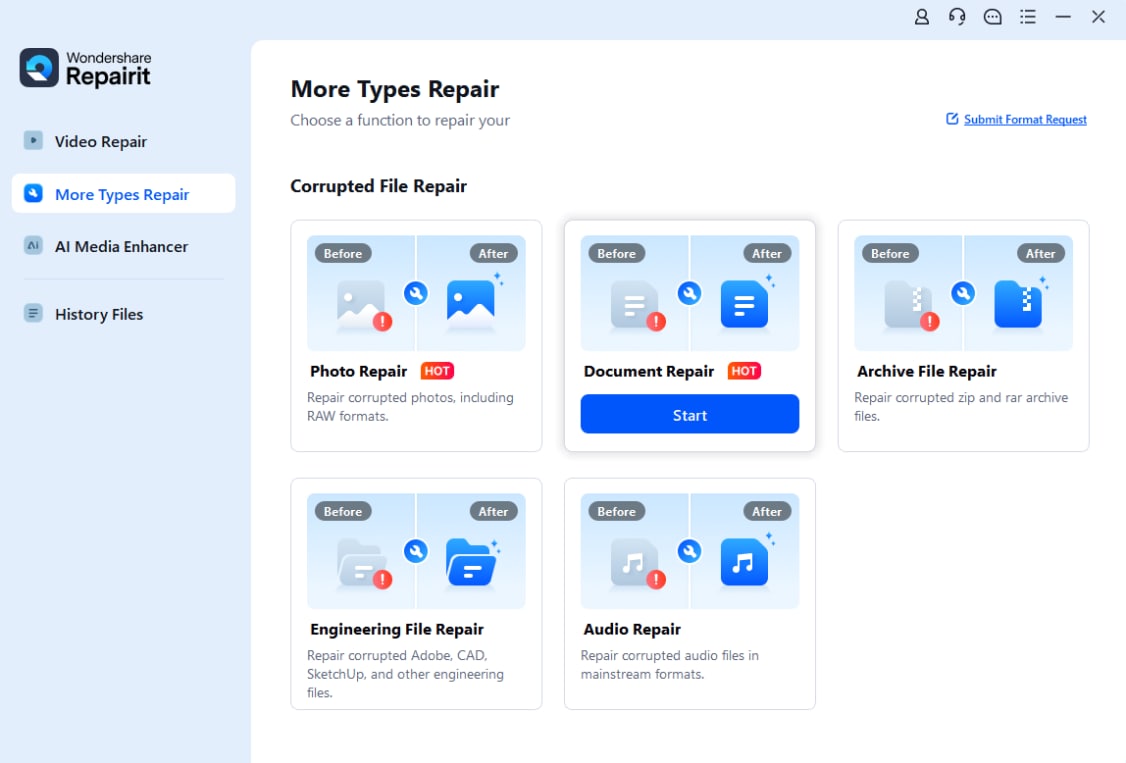
Step 2. Click +Add and select the problematic XLSX file from your device.
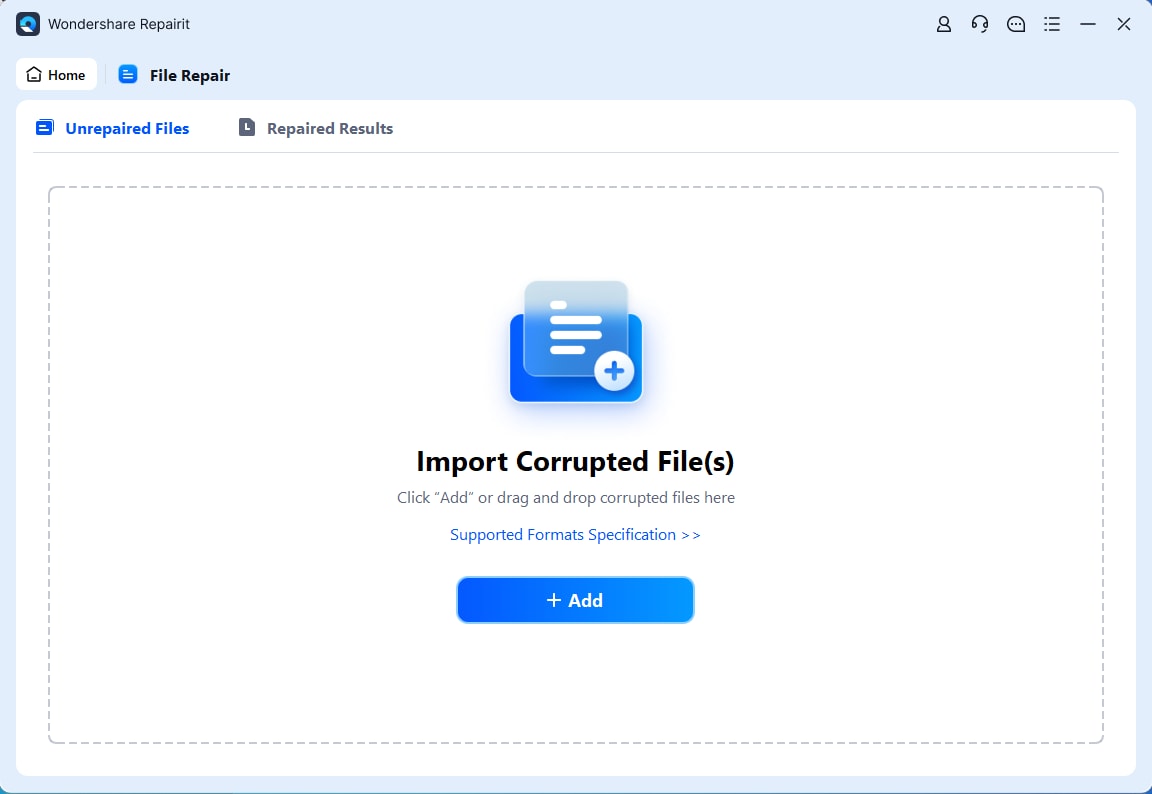
Step 3. Click Repair to begin fixing the file.
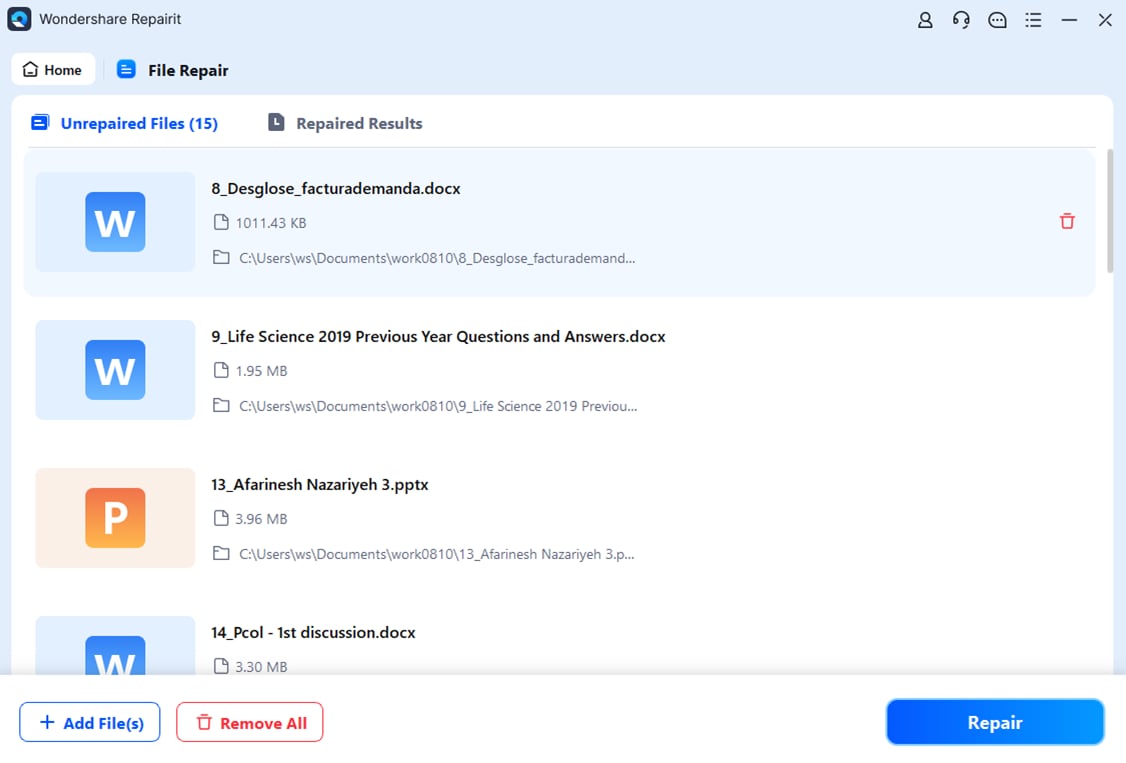
Step 4. Once the repair is complete, use the preview option to check the recovered data. If the file looks correct, click Save to download the repaired file to your desired location.
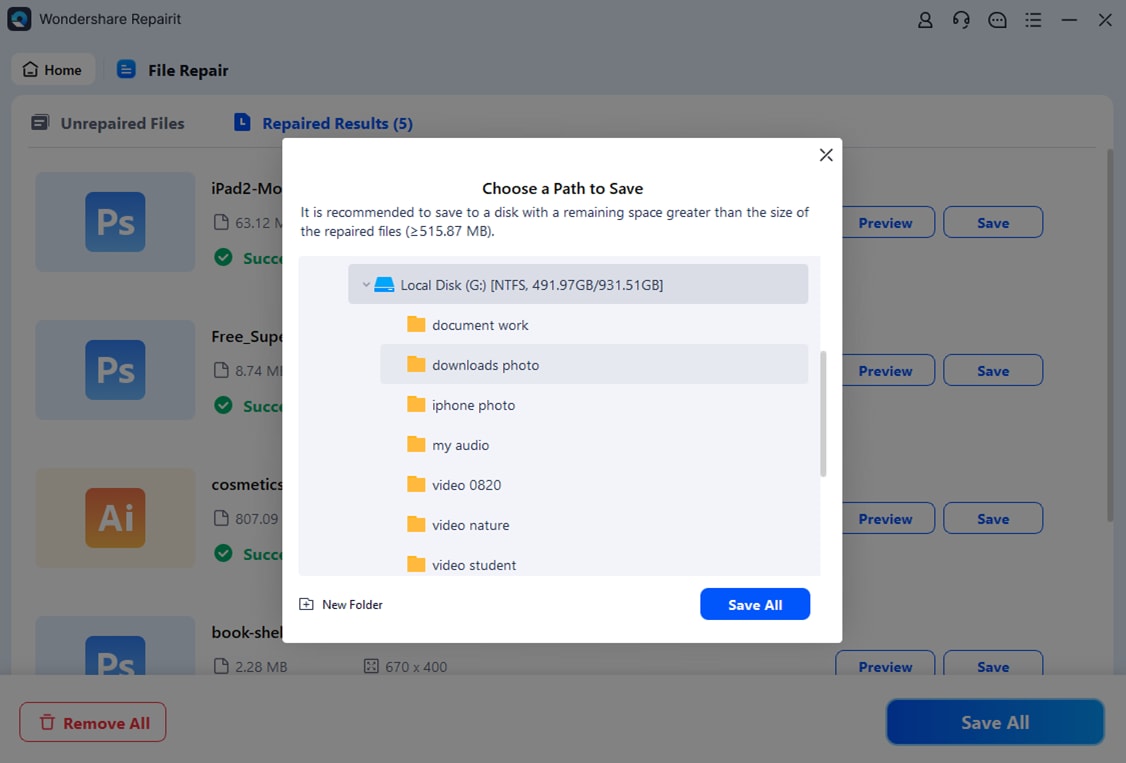
Fix Persistent XLSX File Not Opening Issue

Part 4: Tips to Avoid XLSX File Not Opening Issues in the Future
Preventing XLSX file problems is easier than dealing with them later. By following a few simple tips, you can keep your files safe and accessible. Here are some practical ways to avoid issues with XLSX files in the future:
Tip 1. Keep Excel Updated. Always use the latest version of Microsoft Excel. Updates include important improvements that prevent compatibility problems with newer file formats.
Tip 2. Save Files Properly. Make sure you save files correctly, and avoid sudden interruptions during the saving process. This reduces the risk of file corruption.
Tip 3. Use Trusted Sources for Files. Only download or share files through reliable platforms to avoid damaged or unsafe files.
Tip 4. Check File Extensions. Ensure that files are saved with the correct .xlsx extension to avoid recognition errors.
Tip 5. Manage File Permissions. When sharing files, adjust permissions to allow proper access while maintaining security.
Tip 6. Backup Important File. Regularly back up your XLSX files to avoid losing data due to corruption or accidental deletion.
Tip 7. Scan Files for Viruses. Use antivirus software to scan files before opening them, especially if they come from unknown sources.
Tip 8. Avoid Overloading Files. Large or overly complex files can sometimes cause Excel to crash or fail to open. Split large datasets into smaller files if needed.
Conclusion
XLSX files not opening can disrupt your work, but understanding the causes and knowing how to fix them makes the problem manageable. Start with simple troubleshooting steps like updating Excel or repairing the XLSX file. Then, use advanced tools like Repairit for more complex issues.
To avoid future problems, practice good file management and stay updated with the latest software. Now, you can ensure that your files remain accessible and secure.
FAQ
-
What does it mean when Excel says the file is corrupted?
When Excel says a file is corrupted, it means something went wrong with the file’s structure, making it unreadable. This can happen during sudden power outages, system crashes, or incomplete file downloads.Corrupted files might not open at all, or you may see strange characters and missing data when they do. Corruption can also occur if the file was created or edited using unreliable software or apps.
-
Why do older Excel versions struggle to open XLSX files?
Older versions of Excel, like Excel 2003 or earlier, were designed to use the .xls format. The XLSX format was introduced later with newer features, like better compression and larger storage capacity for data.Since older versions weren’t built to understand these features, they can’t open or display XLSX files correctly without special plugins or conversion tools.
-
Is antivirus software blocking my XLSX file?
Yes, this can happen when an antivirus program detects the file as a potential threat, even if it’s safe. This is common with files downloaded from unknown websites, email attachments, or shared over unsecured networks.Some antivirus programs might block the file completely, while others may allow you to open it after scanning. You can usually solve this by marking the file as safe or adjusting your antivirus settings for trusted files.
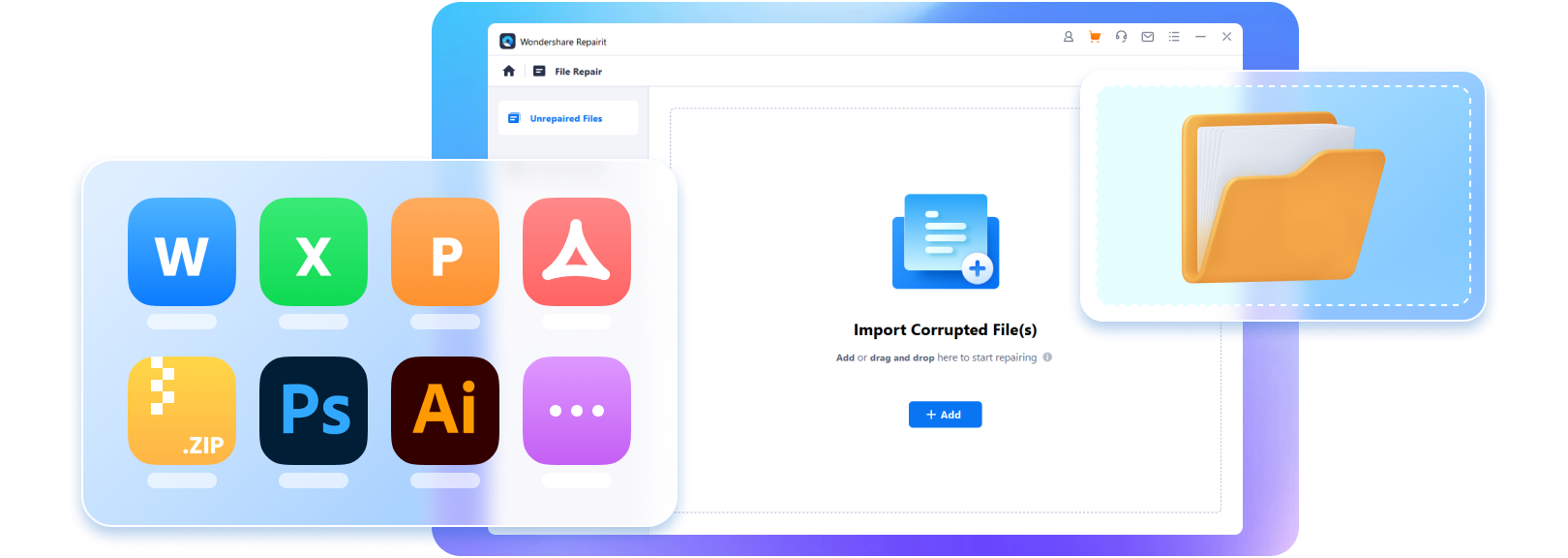

 ChatGPT
ChatGPT
 Perplexity
Perplexity
 Google AI Mode
Google AI Mode
 Grok
Grok

